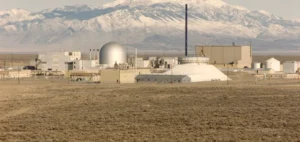GE Hitachi Nuclear Energy (GEH), Tennessee Valley Authority (TVA), Ontario Power Generation (OPG) and ORLEN Synthos Green Energy (OSGE), sign a technical collaboration agreement to promote the global deployment of the small modular reactor (SMR) BWRX-300 from GEH. The collaboration aims to ensure that the standard design is deployable in multiple jurisdictions. Thus, the long-term goal is to license and deploy the BWRX-300 design in Canada, the United States, Poland and beyond.
Companies invest and collaborate in the development of SMR BWRX-300 reactors
The companies form a working group of the design center. They are investing in the development of the BWRX-300 standard design and the detailed design of key components, including the pressure vessel and reactor internals. In effect, each contributor has agreed to fund a portion of the total development cost of a standard design, which GEH expects to reach approximately $400 million.
In addition, TVA, OPG and SGE have already announced plans to collaborate on GEH’s BWRX-300 SMR. OPG has begun site preparation on the Darlington New Nuclear Reactor Project in Ontario, which will be the first large-scale SMR in North America. As for TVA, it is preparing a building permit application for a BWRX-300. OSGE, meanwhile, is beginning the pre-licensing process in Poland for the reactor and has started a site selection process for its first unit.
Collaboration with GEH for advanced construction technologies
According to GEH President and CEO Jay Wileman, “getting this right is critical” because nuclear power must be part of the equation if we are to achieve carbon neutrality by 2050. But to “earn” his place at that table, “we have to be on time, on budget and the cost has to be competitive. That’s one of the main goals of our design-to-cost approach, in our joint design, where you design it once and build it many times.”
The U.S. Department of Energy (DOE) is releasing the first of its commercial launch reports this week. The aim is to support dialogue with the private sector on the pathways to “commercial launch” of a range of technologies. In addition, the department has been working with GE on boiling water reactor technology “for decades.” It is also collaborating with GEH on advanced construction technologies to make nuclear construction faster and cheaper.
Indeed, this collaboration between the four major companies is a significant step toward advancing the global deployment of GEH’s BWRX-300 SMR. The companies agreed to invest in the development of a standard design and to collaborate to ensure that the BWRX-300 design can be deployed in multiple jurisdictions. This will strengthen its cost competitiveness. This is a critical step toward achieving carbon neutrality by 2050 and meeting the growing need for clean electricity.






















